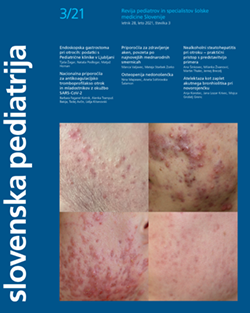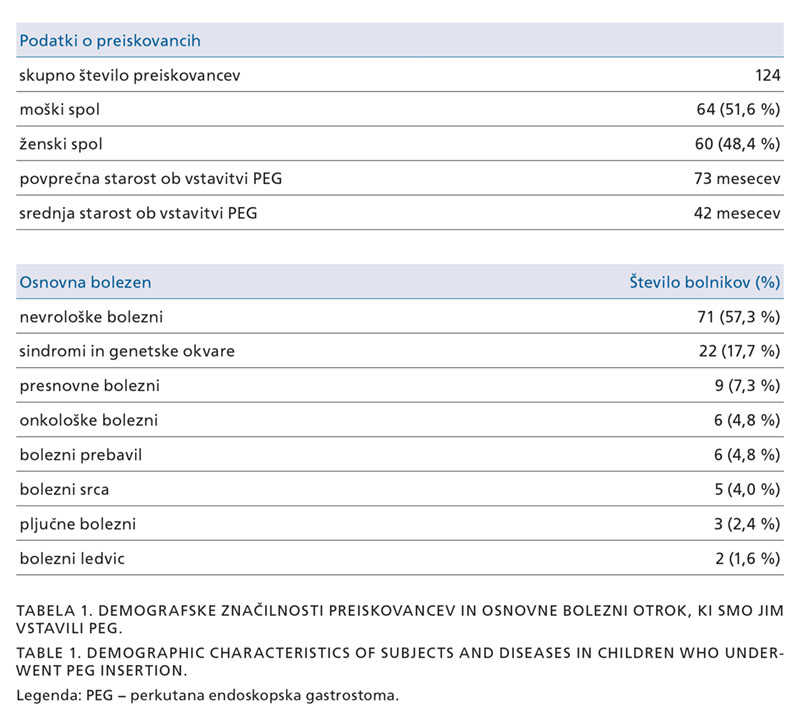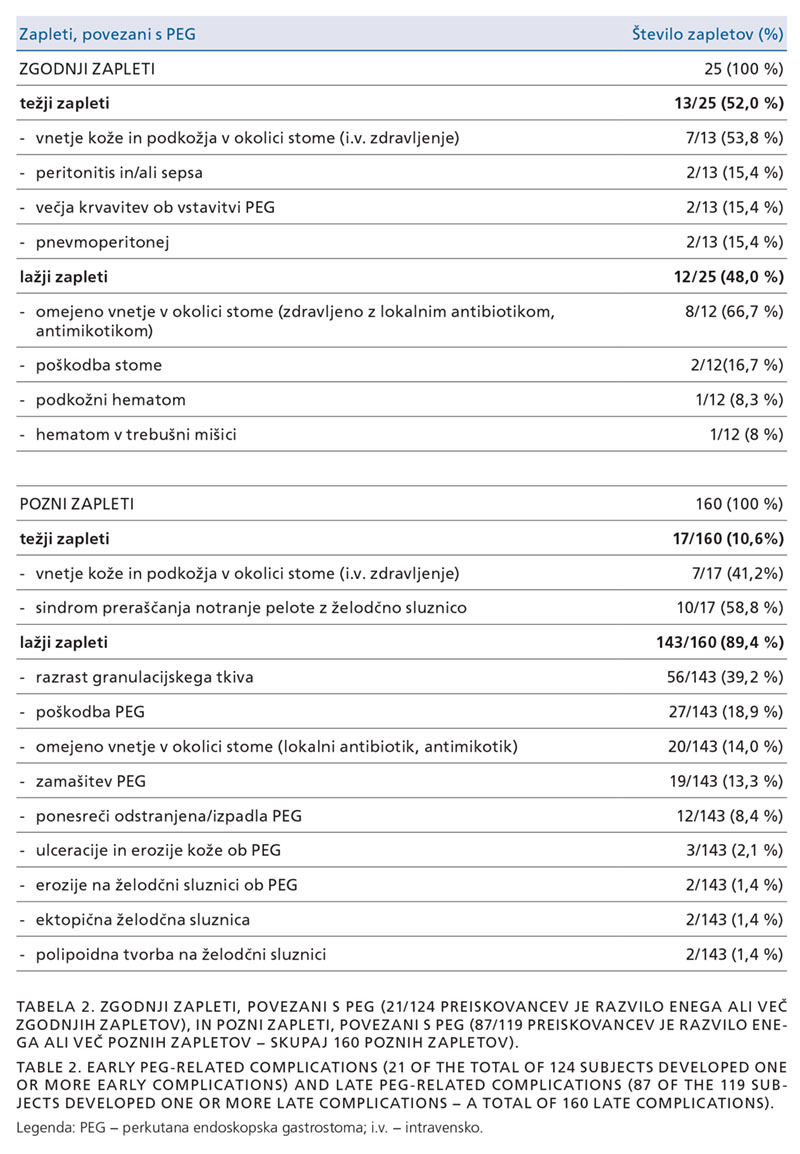
|
Article short contents
Slovenska pediatrija 2021; 28: 123-129
https://doi.org/10.38031/slovpediatr-2021-3-01en
|
: 566
Original scientific article
PERCUTANEOUS ENDOSCOPIC GASTROSTOMY IN CHILDREN: DATA FROM THE CHILDREN‘S HOSPITAL IN LJUBLJANA
Tjaša Žagar
Splošna bolnišnica Novo mesto − KO za nevrologijo, Novo mesto, Slovenija
Matjaž Homan
KO za gastroenterologijo, hepatologijo in nutricionistiko, Pediatrična klinika, Medicinska fakulteta v Ljubljani, Univerzitetni klinični center Ljubljana, Ljubljana, Slovenija
Nataša Podlogar
KO za gastroenterologijo, hepatologijo in nutricionistiko, Pediatrična klinika, Ljubljana, Slovenija
Abstract
Background: Adequate nutrient intake is very important in childhood. In some cases, feeding and drinking by mouth are not possible or does not meet the nutrient needs of the child. If the prognosis is not favorable and the child is expected to be dependent on enteral feeding for more than 4 weeks, a percutaneous endoscopic gastrostomy (PEG) should be inserted. This enables constant enteral access. Methods: The study is retrospective. We reviewed the medical records of children who had a PEG inserted between May 2011 and May 2019.
Results: The study included 124 children, of whom 64 (51.6%) were boys. The median age at PEG insertion was 42 months. Most children (91.9%) received a dose of an antibiotic prior to PEG insertion. In the vast majority of children (96%), feeding through the PEG was instituted 24 hours after PEG insertion. 57.3% of children who underwent PEG insertion had a neurological disease. The primary gastrostomy was replaced with a low-profile gastrostomy after 5 months. One year after PEG insertion, the children had gained weight (on average 3 kg). Out of 124 children enrolled in the study, 96 (77.4%) developed one or more PEG-related complications, most of which were minor or transient.
Key words: children, nutrient intake, percutaneous endoscopic gastrostomy, complications

